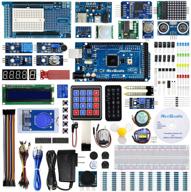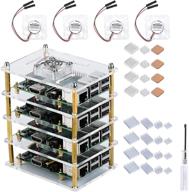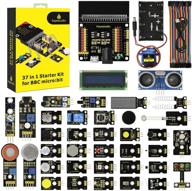
Review on Realtec RTD1296 Suitable Entertainment Automation by Richard Eledge

You need experience building firmware, compiling a kernel from source, and developing an operating system.
I chose BPI-W2 as a potential basis for a developing product, mainly because of its greater extensibility than a competing product in this market segment. It was an absolute nightmare for various reasons. They are marketed as supporting a wide range of operating system variants such as Ubuntu/Debian, Arch and other Linux distributions besides Android. However, what you will not know is that all operating systems of SinoVOIP are specially developed, which has nothing to do with real versions of Ubuntu etc. The whole look and feel is completely changed and you cannot change the PPA externally. the Chinese PPAs they contain - even after changing configurations and locales. At least there seemed to be English support from these places. But forcing a PPA from a custom distribution doesn't seem safe for product development. 2. SinoVOIP offers little support and documentation for this product and appears to rely on its customer base to support the community to an unusually high degree. I understand that these are development boards and a lot of these projects are based on open source material, but there needs to be some kind of supporting documentation that they provide. Much of this is limited to the OS error messages they provide and users on their community forums. Much of the primary source material they provide is difficult to understand as the language of the documentation is often incomprehensible and appears to have been translated online. But maybe there are other types of support you could find, right? 3. Well, the chipset used for the BPI-W2 is a Realtek SoC. These chipsets are rarely used on development boards, so there is little support for them. The documentation is not openly provided by Realtek - only the documentation and support provided by SinoVOIP (Banana Pi) and the community forum remain. If it were a mainstream chipset, it would probably be possible to look for documentation outside of the SinoVOIP community. But it's a fairly obscure chipset.4. When trying to compile OpenWRT from source, this is still a problem. Using their own image builder to compile the kernel, boot and flash from source will not create a bootable OS image. Only Ubuntu and Debian Buster could boot successfully, but these custom images didn't allow changes to the PPA for updates (see #1 above). In general, if you want to take advantage of this because you were also tempted by the extensibility, just be aware of the downsides: how low your development needs to be, how little information and support SinoVOIP provides on this product (to be honest, Realtek provides no public data available) how little documentation exists in the wild times due to this little-known SoC chipset.
- Like everything before
- Definitely a bad product
New products
Comments (0)
Top products in 🖥️. Single Board Computers

REXQualis Comprehensive Starter Kit with Arduino MEGA 2560 & Detailed Tutorial for Arduino IDE Compatibility

11 Review

GeeekPi Raspberry Pi Cluster Case with Cooling Fan and Heatsink for Pi 4 Model B, 3 Model B+ & 3/2 Model B

11 Review

LAFVIN Super Starter Kit for Arduino R3 Mega2560 Mega328 Nano with Detailed Tutorial - Compatible with Arduino IDE

11 Review

🎁 Ultimate BBC Micro bit Sensor Starter Kit: Keyestudio 37-in-1 Box with Tutorial, Compatible with V1.5 & V2, Gift for Kids and Adults (Microbit Board Not Included)

11 Review
Another interesting products

🖥️ Helifouner 450-Piece Computer Standoffs Spacer Screws Kit: Ideal for Hard Drive, Motherboard, Fan, Power Graphics & Computer Cases

10 Review

MacBook Retina 13-inch (A1425, A1502) and 🔩 15-inch (A1398) Bottom Case Screw Set with Pentalobe Screwdriver

11 Review

36-Pack Black Rubber PC CPU/Case Fan Screws/Rivets Set for Computer

11 Review

uxcell 3.5" HDD Screw Black 200pcs for Computer PC Case - Flat Phillips Head - 6#-32 - Hard Drive Fasteners

10 Review

